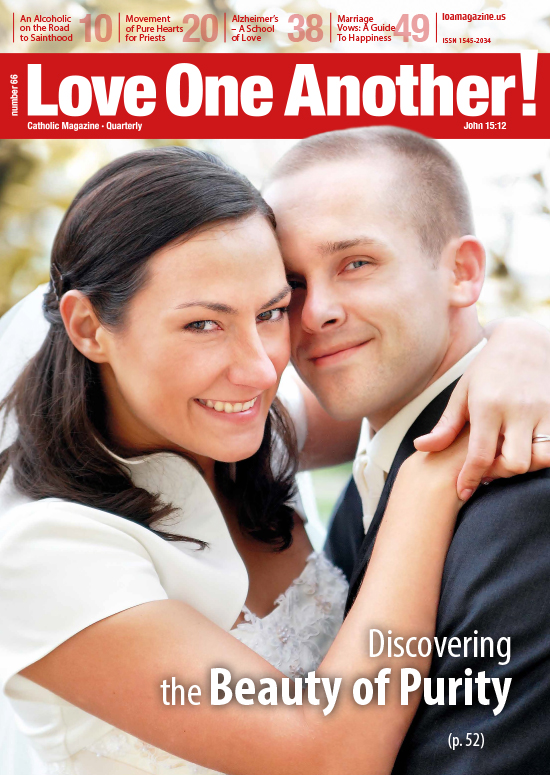The Dictatorship of Democracy

Not content to squeeze the Church and Christianity out of public life, militant secularism is now claiming a position of dominance by persecuting those who refuse to toe the prevailing line of “progress and modernity.” Thus secularism is taking on all the characteristics of a religion.
A new militant religion
Shortly after the fall of Russian communism in 1989, in his encyclical Centessimus annus, Pope John Paul II warned the former communist bloc countries that, “democracy without values easily turns into open or thinly disguised totalitarianism.” He would renew these warnings in subsequent magisterial pronouncements. The current successor of St. Peter, Pope Benedict XVI, has likewise spoken out publically against the “dictatorship of relativism” threatening the world.
From the events unfolding before our eyes in the so-called civilized West, we can state that the warnings of the popes have become fact. Not content to squeeze the Church and Christianity out of public life, militant secularism is now claiming a position of dominance by persecuting those who refuse to toe the prevailing line of “progress and modernity.” Thus secularism is taking on all the characteristics of a religion, or pseudo-religion—and a militant one at that. It has its own canonical texts (take only the programmatic pronouncements of the leading representatives of the New Left, the postmodernists, and the neo-Marxists), its own apostles (the liberal media, which also serve as a Liberal Inquisition), its own icons (e.g. Barak Obama), and its own faithful adherents (“the enlightened electorate based in the large urban centers”).
The repressive face of this militant secularism is most clearly seen in the so-called equality legislation passed in recent years on both sides of the Atlantic. According to its liberal-minded authors, its aim is to combat “homophobia” and purge “hate speech” from public life. Any fostering of “prejudice” of this kind, any use of such “hate speech” risks the penalty of imprisonment or a stiff fine.
Thus the state has a tool of repression aimed at Christians who would remind the public of the teachings of Holy Scripture and the Church on the subject of sexual deviancy. A few years ago there was the sensational case of the Swedish pastor who did this very thing (i.e. conscientiously discharging his pastoral duties), for which he had to suffer several years of judicial harassment.
The charges of homophobia and hate-speech also extend to those who oppose the adoption of children by homosexual couples. In Great Britain, the penalizing of opposition to the state-sanctioned corruption of children has resulted in the closure of most Catholic adoption agencies. Faced with the alternative of submitting to the morally offensive law (i.e. acting as an intermediary in adopting out children to homosexual couples) and that of closing down their services, the directors of these agencies chose the latter alternative.
In its desire for total domination, the religion of militant secularism is bitterly opposed to the presence in public places of traditional religious symbols, especially Christian ones. In this context, the Christian cross stands as a constant “sign of opposition.” Take, for example, the opposition of the judges of the European Tribunal in Strasbourg, who ordered Italians to remove crucifixes from their classrooms and other public places. This opposition to the cross applies also to seemingly innocuous aspects of Christian piety such as the wearing of necklace crosses. But for militant secularism nothing that is Christian is harmless. In 2006, British Airways employees learned from the company’s managers that they had to stop wearing visible religious jewelry or face dismissal. As the BA officials explained, this decision was dictated by “the company’s uniform regulation banning the display of religious objects on the garb of its staff.” But it was only Christian religious objects that the managers of the British carrier would have banished like the plague. Muslim women employees of BA were free to wear their headscarves, even as Sikh male workers were free to wear their turbans and arm bangles—which are far more “visible” displays than the wearing of a tiny silver necklace cross.
What Islamists and militant secularists have in common
In their hatred of the sign of the Savior’s Passion and Victory, western secularists, for all their talk of tolerance and multiculturalism, hold a position analogous to that of the militant Islamists and the Muslim states so preoccupied with preserving the “purity” of Islam. For example, Saudi Arabia prohibits the wearing of crosses (even when covered) and any practice of the Christian faith—be it through prayer or group bible study—even in the privacy of one’s home. To enforce this prohibition it has created its own special religious police force.
Several years ago the Saudi authorities mounted pressure on the diplomatic representatives of the Scandinavian countries to stop displaying their national flags in front of their embassies in Riyadh (Saudi Arabia’s capital)—a universal practice in the diplomatic world. The “problem” here, of course, were the emblematic crosses being displayed in prominent locations. Saudi Arabia mounted similar pressure on Swiss Airlines to have the national emblem of the Swiss Confederation (i.e. a white cross on a red background) removed from the tails of their commercial aircraft.
Is this comparison of western secularists with the Muslim religious police too far fetched? Recent events suggest otherwise. In June of 2010 the press publicized the story of fifty-seven-year-old Ezzaz Aziz—a Copt (an Egyptian Christian) who fled Muslim Egypt because of religious persecution. He received asylum in Holland. But there again he met with repression on account of his faith. Aziz took a job as a streetcar driver in Amsterdam. He was subsequently fired for wearing a small necklace cross; meanwhile his Muslim female co-workers could freely wear their headscarves—religious symbols that were far more visible.
The situation is analogous to the British Airways situation described above. Only the BA authorities eventually relented and allowed the wearing of necklace crosses. In the case of the Coptic streetcar driver in Holland, the matter was rather more complicated (or, to put it another way, radical secularism upped its militancy). The state transport company employing Aziz claimed that it was not the cross but the small chain to which it was attached that concerned them. “Wearing a chain over the uniform constitutes a threat to the worker’s safety in that it can become snarled in something. Muslim headscarves do not constitute such a danger”—the transport company argued in court. The court accepted the employer’s grotesquely twisted explanation. The judges acknowledged that in the case of Ezzaz Aziz it was not a matter of religious discrimination but of upholding the industrial safety code. “Mr. Aziz is free to wear a cross on a finger-band, bracelet, or ear-ring”—stated the Amsterdam court in explanation of its verdict.
A new secular tradition
The fury of the secularizers—often bordering on the grotesque—is also seen in their war on Christmas. Here the principal testing ground is the USA. The most effective instrument in prosecuting this war is the US Supreme Court, which has proven itself capable of marking out new lines of political and religious argumentation (cf. its 1963 ruling banning prayer in the public schools, its 1987 ruling banning even so-called “moments of silence” before the start of classes, and its 1973 Roe v. Wade decision legalizing the killing of unborn children). Initiating measures against Christmas are organizations of militant secular humanists such as the American Civil Liberties Union (ACLU), which consistently launches legal actions against the violation of their religious freedom (or freedom from religion) by the presence of Christmas nativity scenes.
In 1984, the American Supreme Court heard the case of an action brought against the town of Pawtucket in Rhode Island. Town authorities had allowed the display of a nativity scene in a prominent location. The court dismissed the case by a majority of one (5 to 4). What saved the manger scene in this case was the fact that the display included, along with the Holy Family, a reindeer and a Santa, whose presence—in the opinion of the majority of the bench—“sufficiently assured the secular aspect of the nativity scene.” This gave rise to the so-called “reindeer clause,” which is still in force in American judicature (i.e. a nativity scene may stand in a public place as long as it is provided with additional “secular symbols”; the same thinking informed the Supreme Court’s 1989 ruling in an action launched by the ACLU against Alleghany County).
Creating a new secular Christmas tradition has been the lively business of multinational corporations, post offices, and superintendants of education boards. In 2006, the English Daily Mail examined the presence of religious symbols on Christmas cards and stamps issued by the UK post offices. It turned out that only one in a hundred cards carried a religious message. A characteristic Newspeak now prevails. According to the card manufacturers and owners of large department store chains such as Walmart (USA), the traditional “Merry Christmas” greeting is losing ground to “Happy Holidays!” Stores no longer sell Christmas lights but “winter lights.” City officials (e.g. Birmingham, UK) organize “Wintervals,” and recipients of Christmas cards purchased at the post office are wished, “Have a December to Remember!”
Outright blasphemy also occurs. In 2006 there was a Christmas card in circulation throughout Great Britain portraying the shepherds as stoned junkies to whom the angel appears in their narcotic stupor.
Support for the creation of a new secular tradition also comes from the scientific establishment, which makes its scientific (and financial) career by developing the theory of “global warming”—that other theory, alongside Darwin’s, which now stands as a hallowed taboo, which independent minds take on at great professional risk. In 2008, a group of Australian scientists alarmed public opinion by claiming that Christmas lights contributed to a global increase in electricity consumption. The bowdlerization of Christmas carols and the nativity story is another manifestation of celebrating Christmas without God. As we have seen, in the USA such secularizing measures amount to a legal prohibition based on binding interpretations of the law determined by the Supreme Court. Bear in mind that in the Old Continent it was the German National Socialists who pioneered the bowdlerization of Christmas carols. In 1933, the Third Reich disseminated such a version of the well-known carol, “Silent Night, Holy Night” (Stille Nacht, heilige Nacht) in which the Blessed Mother was replaced by the Fuehrer and the Christ Child by “the great German nation.”
Militant secularists, Islamists, National Socialists—all these shared (and share) a common hatred of Christianity and a love of limitless power—dictatorship. Let us not forget: “Democracy without values easily turns into open or thinly disguised totalitarianism.”
Grzegorz Kucharczyk






